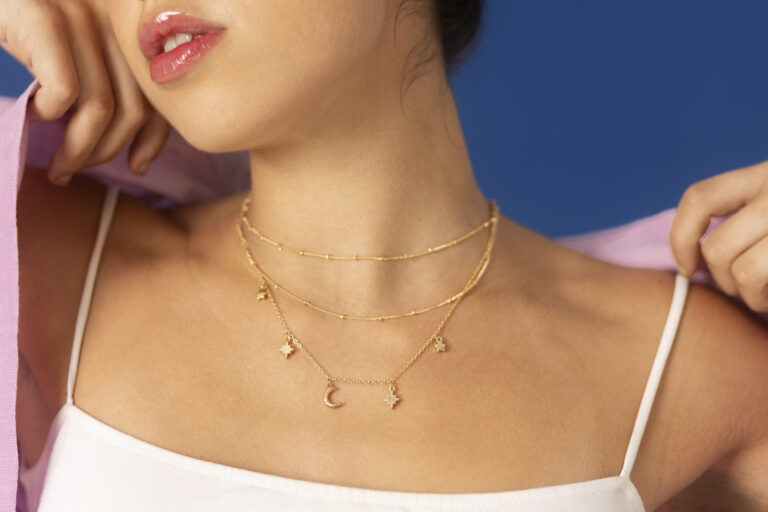
Rare Gemstones in High-End Jewelry
Royal Jewels have long captivated the imagination of those drawn to the mystique and history of the British monarchy.
This article delves into the origins, symbolism, and intricate stories that surround these treasures.
From the iconic Imperial State Crown to the famed Koh-i-Noor diamond, each piece tells a tale of power, conquest, and resilience.
Additionally, we will explore the motifs that represent British heritage, examining how these artifacts not only signify royal authority but also reflect the complexities of the nation’s colonial legacy.
Join us as we unravel the rich narrative woven into the Crown Jewels.
Royal Jewels Through the Ages
The journey of royal family jewels stretches across centuries, a radiant testament to how monarchies have preserved more than wealth through gleaming stones and intricate goldwork.
These treasures reflect a legacy of sovereignty, unity, and cultural identity passed down across generations.
Originating in ritual and religious contexts during the medieval period, royal jewels evolved into potent emblems of ruling authority by the Renaissance, gradually intertwining artistry with political symbolism.
As dynasties rose and empires expanded, the regalia adapted—telling silent stories of conquest, splendor, and diplomatic assertion.
Master artisans from every era shaped them not only with craftsmanship but with deliberate design choices reflecting deeper geopolitical realities.
During the Victorian era, sentimentality and national pride infused the royal ornaments, layering personal meaning atop imperial grandeur.
Today, the jewels in the British royal collection resonate as historical artifacts and enduring diplomatic symbols.
Woven through coronation ceremonies, state visits, and royal commemorations, they serve as a shimmering archive of power’s past and present.
Their influence can still be felt as described in detail on the official royal site, emphasizing their role as more than adornments but carriers of national and dynastic narratives.
- Power embodied in coronation regalia
- Unity represented by dynastic symbols like the Tudor Rose
- Heritage preserved in the regalia’s ceremonial use over time
- Sacred authority mirrored in religiously anointed pieces
Acquisitions through Conflict
The link between war and wealth gleams through royal jewels, each conquest etching its legacy in gold and gem.
From the Battle of Plassey in 1757 to the Second Anglo-Sikh War in 1849, victorious British campaigns secured control over empires—and their treasures.
These conflicts brought coveted stones such as the Koh-i-Noor diamond, adding imperial brilliance to the Crown Jewels.
Royal opulence emerged not from craftsmanship alone, but from the spoils of war, celebrating dominance in shimmering form.
Each victory hardened the narrative that military prowess was inseparable from regal legitimacy, immortalized in gem-set regalia.
| Conflict | Year | Treasure Acquired |
|---|---|---|
| Second Anglo-Sikh War | 1849 | Koh-i-Noor Diamond |
| Battle of Plassey | 1757 | Indian Royal Treasures |
| Anglo-Burmese Wars | 1824–1885 | Rubies and Gold Artifacts |
Alliances and Trade
Dynastic marriages intricately wove political power and opulence by exchanging rare jewels as symbols of loyalty and alliance.
When the Habsburg and Bourbon families aligned through matrimony, their unions often came adorned with emeralds and sapphires sourced from India and Sri Lanka, acquired via trade networks stretching across Asia.
These trade routes, vital during the early modern period, funneled exotic stones into European courts.
Jewels served not just as adornment but as powerful diplomatic tokens—gifts that conveyed trust, wealth, and territorial ambition, solidifying royal bonds and expanding influence through commerce and kinship.
Symbolism Woven into the Gems
Royal jewels communicate more than material wealth—they are enduring testaments to authority, divine right, and national unity, especially when worn in events like coronations and state ceremonies.
Diamonds, with their unmatched strength and clarity, came to represent not only opulence but also the sovereignty of a monarch.
Rubies, associated with vitality and protection, were often positioned at the heart of crowns, projecting power over life and death.
Each precious stone embedded in the regalia served a deeper purpose, narrating a political message of legitimacy.
For instance, sapphires symbolized wisdom and divine favor, reinforcing the belief that leadership was ordained by higher powers.
These gems, woven into royal pageantry, helped construct a visual iconography that transcended generations, supporting the monarch’s continued relevance in changing eras.
“Royal regalia functions as a physical manifestation of the state’s uninterrupted lineage, a jeweled vocabulary of imperial symbolism”
.
Designs like the Tudor Rose also merged mythology and monarchy to signify reconciliation, evoking national solidarity.
Moreover, imperial artifacts such as the Koh-i-Noor captivated audiences not only for their beauty but also for what they represented—the contested narratives of colonial conquest and inherited rule.
Through centuries of use, these jewels fortified more than thrones—they crystallized a monarchy’s legacy in stone and gold, preserving a historical dialect of emblematic meaning.
Tales of Iconic Crown Jewels
Centuries of intrigue and ambition swirl through the gleam of the Koh-i-Noor, a diamond whose very name means “Mountain of Light.
” Once admired by Mughal emperors and passed through the hands of Persian and Afghan rulers, it arrived in British possession during the colonial expansion of the 19th century—a moment that still ignites conversation about imperial legacy (Smithsonian Magazine on the Koh-i-Noor).
Today, the diamond rests within a crown made for Queen Mary, though it no longer features prominently in public ceremonies due to its controversial past.
Transitioning into royal symbolism, the Imperial State Crown embodies continuity, having adorned monarchs from George VI to Elizabeth II.
Its composition includes over 2,800 diamonds and iconic stones like the Black Prince’s Ruby, echoing fables of battle and diplomacy.
Queen Elizabeth II’s coronation in 1953 elevated the crown’s status as a globally recognized emblem of monarchy (Historic Royal Palaces Crown Jewels page).
Beneath it all lies the Tudor Rose Brooch, a motif of unity born from civil turmoil, whose delicate design conceals triumph over division.
Each jewel weaves legacy, power, and narrative into an enduring national mythos
Cultural Legacy of Royal Jewels
Preserving royal jewels as cultural artifacts requires more than secure vaults—it demands a sustained commitment to living history.
Through the careful stewardship of modern museums and royal trusts, these symbols of sovereignty are protected as embodiments of cultural identity.
Institutions like the British Museum’s royal collection play a pivotal role by safeguarding these treasures not as static remnants of the past but as dynamic pieces of collective narrative.
Conservators employ specialized techniques to stabilize delicate materials while researchers work tirelessly to trace the provenance and historical context of each gem.
This fusion of science and heritage enables the jewels to serve not only as artifacts but also as storytellers engaging audiences through curated exhibitions.
These public displays extend beyond spectacle; they offer public education rooted in authenticity and historical depth.
Furthermore, academic collaborations and media documentation help sustain these efforts, ensuring that the legacy carved within each facet and filigree endures for generations.
As visitors explore these exhibitions, they don’t merely admire ornate craftsmanship—they participate in the ongoing conversation of a national story continuously shaped by monarchy, memory, and meaning.
In conclusion, the Crown Jewels serve as a compelling representation of Britain’s royal past and its intricate relationship with history.
They remind us of the enduring power of symbols and the multi-faceted legacy of the monarchy.




